Tulsidas Biography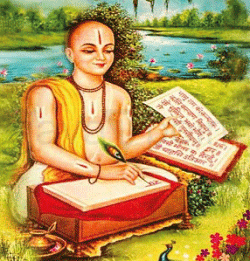
IntroductionTulsidas was born on the seventh day of the month of Shraavana (July or August). His birthplace is Rajapur, located in Uttar Pradesh (UP) on the Yamuna Riverbank. Hulsi and Atmaram Dubey are his parents' names. Tulsidas' precise birth date is unknown, and some scholars were on the debate regarding his birth year. Tulsidas is regarded as one of the best poets in Hindi, Indian, and world literature. He is well known for writing the epic "Ramcharitmanas," a translation of the Sanskrit Ramayana based on Rama's life in the Awadhi dialect. He was recognized for his devotion to Lord Rama. Hanuman, a devoted follower of Rama, is honored in the "Hanuman Chalisa," which is thought to have been written by him. The saint Valmiki, who wrote the first "Ramayana," was said to have been reborn as Tulsidas. Tulsidas was a prolific writer and composer of many well-known compositions; nonetheless, he included very little information about his own life in his writings. Anything we know about him comes mostly from the "Bhaktamal," written by his contemporaries Nabhadas and Priyadas' "Bhaktirasbodhini," a commentary on "Bhaktamal." Early Life of TulsidasRambola was Tulsidas's birth name. Nara Haridas was Tulsidas' spiritual guide. Tulsidas was in his mother's womb for 12 months, and when he was born, he had all thirty-two teeth in his mouth; his health and appearance were like that of a five-year-old boy, he wasn't screaming at the time of his birth, and he uttered Ram right away as he was born, resulting into his childhood name Rambola. He was abandoned by his parents and other family members as a result of the unlucky circumstances surrounding his birth. The day after his birth, his mother passed away. His father gave him to Chuniya, a maid who was Hulsi's female servant. As a destitute orphan who was left to fend for himself, Rambola walked from door to door seeking help. Rambola was nourished daily by the goddess Parvati, who is said to have taken the shape of a Brahmin woman. The Vaishnava ascetic of Ramananda's monastic order, Narharidas, adopted Rambola when he was six years old and gave him the name Tulsidas. Many times, Narharidas taught the small kid the "Ramayana," and eventually, Tulsidas grew to love and follow Ram with fervor. LearningWhen Tulsidas was only 7 years old, the Narharidas performed his Upanayana at Ayodhya. At Ayodhya, he began his first formal education. He stated in his epic, the Ramcharitmanas, that his master frequently recounted the Ramayana. He arrived in the holy city of Varanasi when he was just 15 to 16 years old, and from his master Shesha Sanatana at the Panchaganga Ghat in Varanasi, he learned Sanskrit grammar, Hindu literature and philosophy, the four Vedas, the six Vedangas, and Jyotisha. Marriage BackgroundOn the 13th of Jyeshta month (May or June) in the year 1583, he wed Ratnavali, the daughter of Dinbandhu Pathak of Mahewa village in Kaushambi district. After a few years of marriage, he had a kid named Tarak, but he passed away when he was just a toddler. Once, when Tulsidas was at the Hanuman temple, his wife left to live with her father. He swam along the river Yamuna to meet his wife after arriving home and failing to spot her. Ratnavali was furious and accused him of his behavior. She suggested that he focus on God and grow into a true devotee. He then left her spouse and traveled to Prayag, a sacred city. Tulsida's Interaction with Lord HanumanWhen Tulsidas saw Lord Hanuman at his own Katha, he fell at his feet and yelled, "I know who you are, so you cannot get away from me," after which Lord Hanuman bestowed his blessing. Tulsidas expressed his desire to witness Rama arguing with each other in front of Lord Hanuman. He was led by Hanuman, who advised him to visit the Chitrakuta to see Rama in person. Saint TulsidasTulsidas (1532-1623) was regarded as one of India's foremost Hindu saints and well-known adherents of Hinduism's Bhakti school. Shri Ram has a wonderful devotee in Goswami Tulsidas. 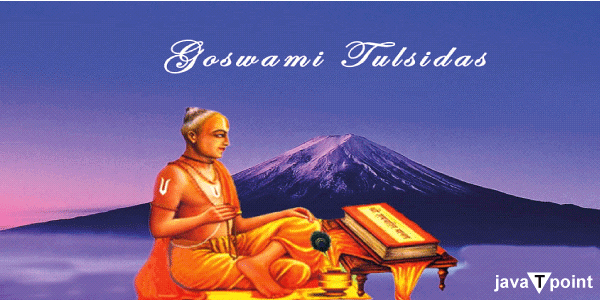
Shri Raam-chart-manas is evidence of the saint's elevated level of devotion and the blessing that God has bestowed upon him. Tulsidas is claimed to have seen Shri Ram and Shri Lakshmana a few times in person. The life of Goswami Tulsidas serves as a powerful example for today's aspirants as it restores trust in God and shows that, even in the Kali Yuga, God can be approached with unwavering devotion. Literary WorksTulsidas' literary works can be linked back to 1574. He has published 12 books, and his entire collection of work is well worth reading. But Ramcharitmanas is the most well-known of all his literary works. It is believed to have been authored with Lord Hanuman's guidance. Ramcharitmanas'Ramcharitmanas' means 'the lake of Ram's deeds.' Shiv narrates the entire story to Parvati. The term 'Manas' refers to a lake that Shiv imagined. The Ramcharitmanas, like the other Ramayanas, are divided into seven parts. It can be likened to Kalidasa's Sanskrit writings in terms of literary excellence. 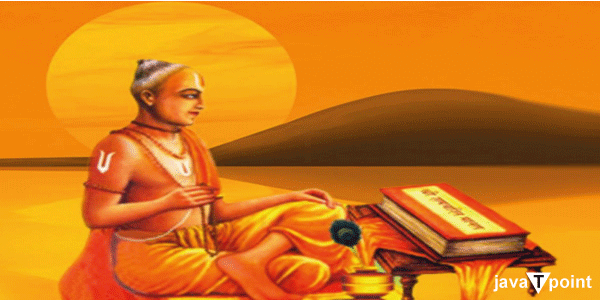
Vishwanath asserts that Tulsidas condensed into one play all the drama and variety of feelings, moods, and opinions that Shakespeare dispersed among his thirty-seven plays. Through its fascinating poetry, it not only offers a philosophical perspective on life, but it also serves as a potent tool for Lila chintan, or sadhana which involves pondering about the deeds and glory of God. Most of his writings center on Lord Rama's life, his deeds, and the author's relationship with him. The Vinaya Patrika, Hanuman Chalisa, the Dohavali, the Gitavali, and the Krishnavali are some of his other well-known compositions in addition to Ramcharitmanas. Vinaya PatrikaThe poem comprises 279 stanzas and was written in Braj Bhasa. Hymns to the various gods and Lord Rama's courtiers make up the first 43 stanzas. The final songs are sung in praise of Lord Rama. This is regarded as Tulsidas' second-best work, right behind Ramcharitmanas. Hanuman ChalisaThis piece, which consists of 40 Chaupies and two Dohas, is a supplication to Lord Hanuman. In Northern India, it is regarded as a sacred scripture despite being brief. It is thought that Tulsidas said it while he was in samadhi at the Kumbh Mela in Haridwar. DohavaliThis book contains 573 Dohas, or short verses, written primarily in the Braj and Awadhi languages. The Dohas are concerned with political knowledge, justification, and the meaning of life. 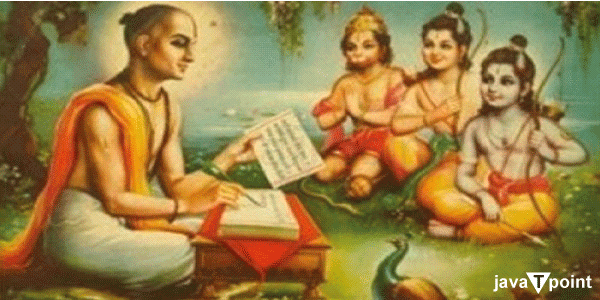
GitavaliIt is a collection of songs set to classical music ragas. There are 328 songs in total, separated into seven Kandas. KrishnavaliIt consists of 61 songs addressed to Lord Krishna. Thirty-two songs are dedicated to Krishna's childhood games and Rasalila, while the remaining 27 songs form the discussion between Krishna and Uddhava. The final two songs narrate the episode of Draupadi's disrobing. The other works of Tulsidas, in addition to these renowned ones, include Barvai Ramayana, Parvati Mangal, Janaki Mangal, and Ram. Composition and Travel of TulsidasTulsidas traveled and visited Badrinath, Rameshwaram, Dwarka, and Jagannathpuri. He then proceeded to Kailash and Manasarovar Lake from there. He kept going on his trek for about 17 years until settling at Chitrakuta. He began writing the Ramcharitmanas at Ayodhya in the year Vikram 1631 on a Sunday, and it took him 2 years, 7 months, and 26 days to finish. He finished the work on Vikram 1633 on the day of Vivaha Panchami. Not many people are aware that Goswamiji wrote the Gitavali and Krishna Gitavali before Ramcharitmanas, both of which show Surdas' influence. The Mughal emperors Akbar and Jahangir admired the works of Goswami Tulsidas. Tulsidasji traveled to Banaras, a sacred city. Even today, Tulsidas' poems demonstrate how his intense dedication and intellectual beliefs were seamlessly incorporated, making him one of the greatest Hindi poets to have produced such outstanding literature. Tulsidas's IdeologyTulsidas's ideology is based on Ramanuja and Ramananda. He believed in a supreme personal God endowed with all beneficent attributes (laguna), as well as Sankaracharya's lack of quality (nirguna). To approach the Lord, one must have trust, practice selfless devotion (bhakti), surrender to perfect love, and purify all activities of personal gain. 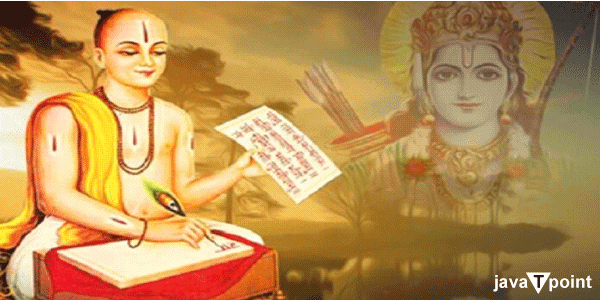
Tulsidas was never drawn to miracles or wealth. He was innocent but bold, courageous, and straightforward in his comments. He never started a sect or a school, nor did he preach any specific teaching. His exemplary life and captivating, compelling, and moving poems, however, have had a long-lasting effect on humanity. Death and Tulsidas' Final CompositionTulsidas, who had been suffering for a long time, passed away at the age of 91 in Assi Ghat on the banks of the Ganga on July 31, 1623. Tulsidas should have penned the final piece, Vinaypatrika, before his death, inscribed with Lord Ram's signature near Assi Ghat. The Vinaypatrika is thought to be Tulsidas' final composition, written when the Kali Yuga began to trouble him. In this 2798-stanza masterpiece, he begged Rama to grant him Bhakti (devotion) and accept his appeal. In the final line of Vinaypatrika, he attests that Rama himself signed the manuscript. Many Hindus sing the 45th stanza of the Vinaypatrika during the Aarti. ConclusionTulsidas was a brilliant Hindu poet of the sixteenth century, and his artistic ability was evident all over. He created essential information for all eras and futures, individuals and societies. Although Tulsidas did not have a modern outlook, his ideas and achievements were valuable, which helped him to improve society. FAQSQ. When did Tulsidas pass away? A. Tulsidas was born in Banda in 1532 and passed away in Assi Ghat in 1623. Q. What year did Tulsidas write the Ramayana? A. It was composed in 1631. Q. Tulsidas wrote the Ramcharitmanas in which language? A. Awadhi is the language in which it was written. Q. What is the caste of Tulsidas? A. Tulsidas was born a Brahmin and was thought to be the reincarnation of Valmiki.
Next TopicChetan Monga
|
 For Videos Join Our Youtube Channel: Join Now
For Videos Join Our Youtube Channel: Join Now
Feedback
- Send your Feedback to [email protected]
Help Others, Please Share









